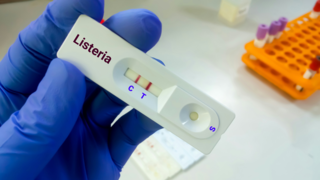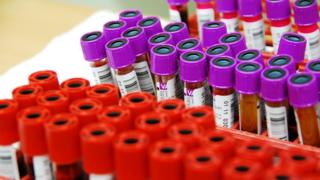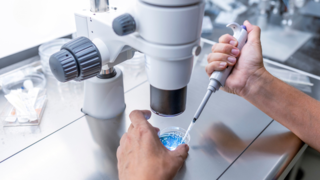In this article:
This procedure has helped many individuals conceive again after having a tubal ligation. It offers hope for those who wish to grow their family after choosing permanent contraception in the past.
What is Tubal Ligation Reversal?
Tubal ligation reversal is a surgical procedure designed to undo a previous tubal ligation, commonly known as “having your tubes tied.” Tubal ligation involves blocking, tying, or cutting the fallopian tubes to prevent pregnancy by stopping eggs from meeting sperm. The reversal procedure reconnects these tubes and creates a pathway for eggs and sperm to unite. This can enable natural conception and increase the chances of pregnancy. This procedure is also called tubal sterilisation reversal, tubectomy reversal, tubal re-anastomosis, or simply tubal reversal.If you wish to explore alternative options, in vitro fertilisation (IVF) is another way to conceive after tubal ligation. IVF doesn’t require functional fallopian tubes and may be recommended instead of reversal in some cases.
Who is a Good Candidate for Tubal Ligation Reversal?
Not everyone is a suitable candidate for tubal ligation reversal. Your doctor will assess several factors to determine if this procedure is likely to succeed for you. These factors influence the chances of a successful pregnancy post-reversal.- Age: Younger individuals, especially those under 35, have better pregnancy success rates due to higher fertility and lower risks of miscarriage or congenital conditions.
- Type of tubal ligation: Procedures using clips or rings to block the tubes are easier to reverse than those involving electrocautery (burning) or complete tube removal.
- Fallopian tube health: A sufficient length of a healthy fallopian tube is necessary for reconnection. Reversal may not be possible if too much of the tube was removed or damaged.
- Fertility factors: Conditions like irregular periods, endometriosis, uterine fibroids, or pelvic scarring can reduce success rates.
- Partner’s sperm health: A semen analysis may be conducted to check if your partner’s sperm quality and quantity support conception.
Preparation for Tubal Ligation Reversal
Proper preparation is important for a smooth procedure and recovery. Your doctor will review your medical history, including details of your tubal ligation, previous pregnancies, and any pelvic surgeries. They may order blood tests, imaging, or a hysterosalpingogram (HSG) to check the length and function of your remaining fallopian tubes.You will be required to make the following lifestyle adjustments before your surgery:
- Stop smoking to improve pregnancy outcomes.
- Reduce alcohol and caffeine intake.
- Take a multivitamin or prenatal vitamin with folic acid to support a healthy pregnancy.
- Manage any existing medical conditions.
How is the Procedure Performed?
Tubal ligation reversal is a surgery performed in a hospital or an outpatient centre. Doctors will use minimally invasive techniques for this procedure:- Anaesthesia: You’ll receive general anaesthesia to make sure you’re asleep and pain-free throughout the surgery.
- Initial assessment: The surgeon inserts a laparoscope (a small camera) through a tiny incision near your navel to examine the fallopian tubes and confirm if reversal is feasible.
- Surgical process: If reversal is possible, the surgeon makes a small “bikini cut” near the pubic hairline or uses multiple tiny incisions for laparoscopic or robotic-assisted surgery. They remove any clips, rings, or blocked tube segments and reconnect the healthy tube ends to the uterus using fine, dissolvable stitches.
- Tube patency check: A dye is injected through the uterus to ensure the tubes are open and properly reattached. The absence of leakage suggests that the procedure was successful.
- Duration: The procedure typically takes 2 to 3 hours.
What to Expect After Tubal Ligation Reversal Surgery
Recovery from this procedure varies based on the surgical method used, but most patients can return home the same day. Post surgery, you can expect the following:- Hospital stay: With microsurgical or laparoscopic techniques, you’ll likely be discharged within 2 to 4 hours after monitoring. Some cases may require a 1 to 3-day hospital stay.
- Pain Management: You may experience soreness at the incision site. Your doctor will prescribe painkillers or recommend over-the-counter pain relievers to keep you comfortable.
- Wait at least 48 hours before showering and gently pat the incision dry.
- Avoid rubbing or straining the incision for a week.
- Refrain from heavy lifting or sexual activity for the duration advised by your surgeon.
Costs of Tubal Ligation Reversal
The cost of tubal ligation reversal can vary depending on the hospital, surgeon, and location. In India, the procedure typically ranges from Rs 50,000 to Rs 70,000. This includes surgery, anaesthesia, and hospital fees but excludes pre-surgery fertility tests, which may add to the overall expense.Insurance policies often do not cover this procedure, so it’s important to check with your doctor.
Risks and Complications
Take a look at some of the risks associated with this procedure:- Infection: Possible at the incision site or internally.
- Bleeding or blood clots: Can occur during or after surgery.
- Anaesthesia reactions: Allergic responses or complications from anaesthesia are rare but possible.
- Ectopic pregnancy: The embryo might implant in the fallopian tube instead of the uterus. However, the risk is relatively low (1 to 2 per cent).
- Scarring: Scar tissue may form at the reconnection site and block the tubes again, reducing fertility.
- Failure to conceive: Pregnancy is not guaranteed even with successful surgery.
- Organ Damage: Nearby organs may be injured during surgery.
Success Rates of Tubal Ligation Reversal
According to a study conducted in Solapur, Maharashtra, over a period of 20 years, tubal ligation reversal using macrosurgery with microsurgical principles showed promising results. Of the 142 women who underwent the procedure, 78 were followed up, and 66.67 per cent achieved an intrauterine pregnancy. The study found higher success rates of 81 per cent for women under 30 years old and when the reversal was performed within 3 years of sterilisation. The success rate of tubal reversal after laparoscopic sterilisation was 86.67 per cent. It is important to note that when the residual fallopian tube length after surgery was more than 5 cm, the success rate was significantly higher.Why Choose Tubal Ligation Reversal?
The primary advantage of tubal ligation reversal is the ability to try for pregnancy naturally each month without additional fertility treatments. This can be appealing if you wish to conceive multiple times.However, IVF may be recommended if:
- Your fallopian tubes are too damaged for reversal.
- You’re older or have other fertility challenges.
- You prefer a non-surgical approach, despite IVF’s need for multiple steps like fertility drug injections and frequent monitoring.
FAQs on A Second Chance at Pregnancy with Tubal Ligation Reversal
- Who is eligible for a tubal ligation reversal procedure?
Candidates include individuals in good health, ideally under 35, with enough healthy fallopian tubes remaining and no major fertility issues. - Are there any risks associated with tubal ligation reversal?
Yes, risks may include infection, ectopic pregnancy, bleeding, scarring, and possible failure to conceive. - How long does the tubal ligation reversal surgery take?
This procedure can last between 2 to 3 hours.






